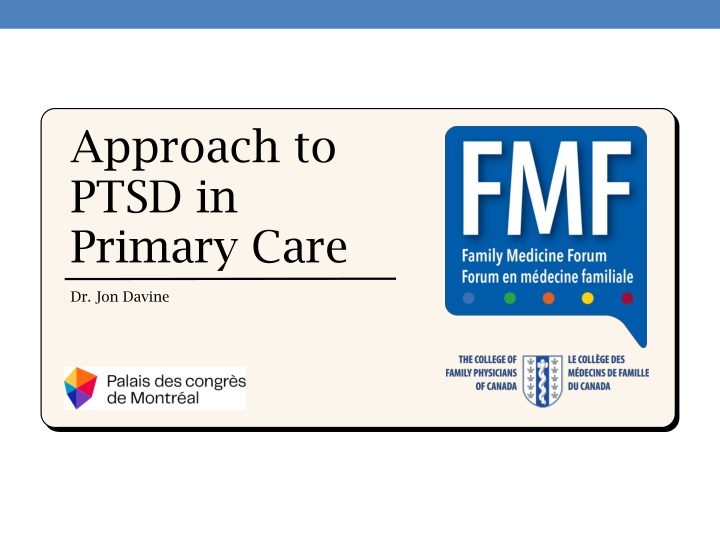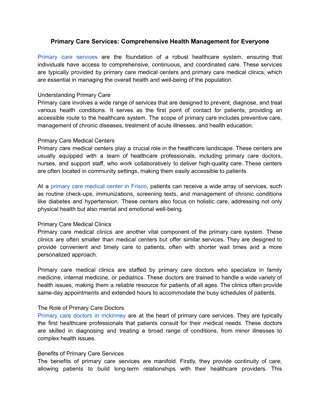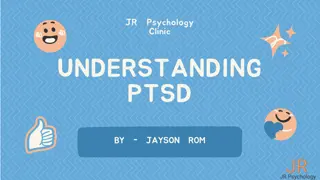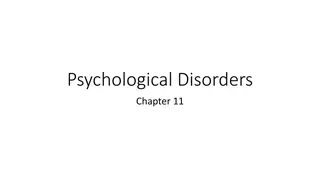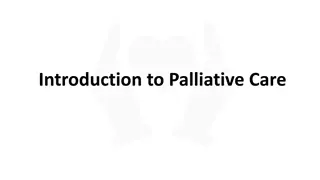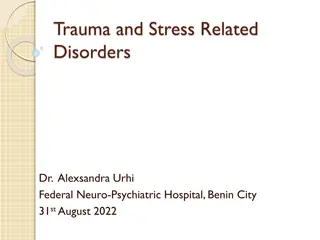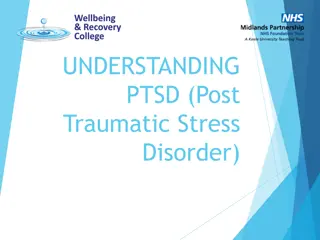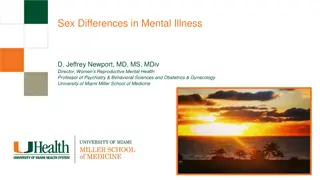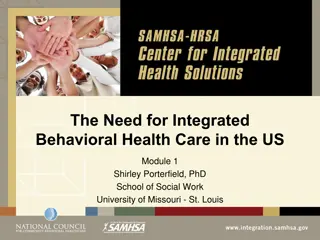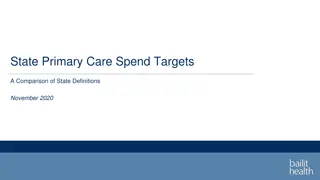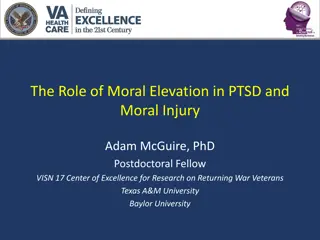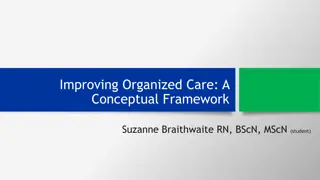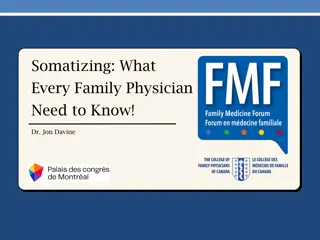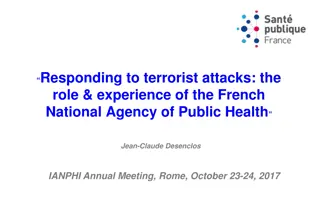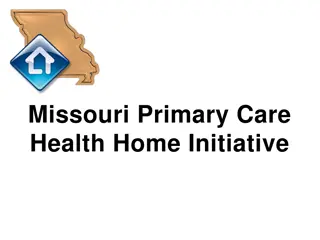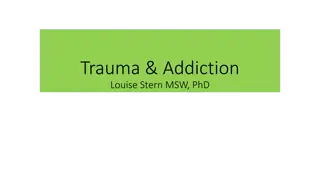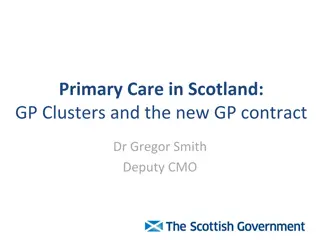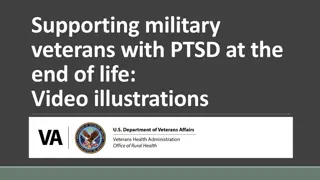Approach to PTSD in Primary Care by Dr. Jon Davine
This presentation by Dr. Jon Davine explores the effective questioning, situations leading to PTSD, psychotherapeutic techniques, and evidence-based pharmacological therapies for PTSD in primary care. It covers objectives, guidelines, PTSD prevalence, associated issues, DSM-V diagnosis criteria, and more.
Download Presentation

Please find below an Image/Link to download the presentation.
The content on the website is provided AS IS for your information and personal use only. It may not be sold, licensed, or shared on other websites without obtaining consent from the author.If you encounter any issues during the download, it is possible that the publisher has removed the file from their server.
You are allowed to download the files provided on this website for personal or commercial use, subject to the condition that they are used lawfully. All files are the property of their respective owners.
The content on the website is provided AS IS for your information and personal use only. It may not be sold, licensed, or shared on other websites without obtaining consent from the author.
E N D
Presentation Transcript
Approach to PTSD in Primary Care Dr. Jon Davine
Presenter Disclosure Presenter: Dr. Jon Davine Relationships with financial sponsors: Any direct financial relationships, including receipt of honoraria: Ontario College of Family Physicians, Touchstone Institute, McMaster University Continuing Education, CMEAway by Sea Courses, Pri-Med Canada/Humber River Hospital, University of Ottawa Dermatology, Peterborough FHT, Kitchener Waterloo Family Medicine Membership on advisory boards or speakers bureaus: NO Patents for drugs or devices: NO Other: CAMH---Co-Editor of book, Psychiatry in Primary Care , Ontario Psychiatric Association--- Treasurer
Disclosure of Financial Support This program has NOT received financial support This program has NOT received in-kind support Potential for conflict(s) of interest: Dr. Jon Davine has NOT received funding for this program
Objectives Identify effective questioning to make the diagnosis of PTSD Identify a number of situations that may lead to PTSD Describe effective psychotherapeutic techniques that can be used in the medical setting Describe evidence-based, effective psychopharmacological therapies that can be used in primary care
Guidelines Katzman 2014 Anxiety Guidelines NICE (National Institute for Health and Care Excellence) Guidelines, December 5, 2018.
Posttraumatic Stress Disorder Lifetime prevalence in Canada 9.2% Onset mid to late 20 s Women > men
PTSD Associated with high rates of chronic pain, sleep problems, sexual dysfunction Suicide attempts increase two- to three-fold Increased use of mental health care
DSM-V Diagnosis of PTSD Applies to >6 years of age A. Exposure to actual or threatened death, serious injury or sexual violence by: Directly experiencing the event Witnessing the event in person, as it occurs to others Learning that the traumatic event occurred to a close family member or a close friend. The event(s) must have been violent or accidental. Experiencing repeated exposure to aversive details of traumatic events (police, 1st responders). Not to exposure through electronic media
DSM-V Diagnosis of PTSD Re-experiencing B. One or more. The traumatic event is re-experienced, with intrusive symptoms: Recurrent, involuntary, distressing memories Recurrent distressing dreams, related to the traumatic event Dissociative reactions (flashbacks) in which the individual feels as if the event is recuring
DSM-V Diagnosis of PTSD Triggers Intense or prolonged psychological distress a exposure to internal or external cues that resemble an aspect of the traumatic event Marked physiological reactions to internal or external cues that symbolize or resemble an aspect of the traumatic event May include panic attacks
DSM-V Diagnosis of PTSD C. Avoidance (one or both) Persistent avoidance of memories or thoughts about the event Avoiding external reminders (people, places, activities, objects, situations), that arouse distressing memories associated with the trauma.
DSM-V Diagnosis of PTSD E. Persistent symptoms of increased arousal and reactivity including 2 (or more) of the following: Irritable behaviour and angry outbursts Reckless or self-destructive behaviour Hypervigilance Exaggerated startle Decreased concentration Decreased sleep
DSM-V Diagnosis of PTSD duration of the disturbance is more than one month the disturbance causes clinically significant distress or impairment in social, occupational, or other important areas of functioning.
PTSD: Subtype Specifiers Chronic PTSD (> 3 months) PTSD Symptoms Acute Stress Disorder Acute PTSD Delayed Onset PTSD 1 3 6 (< 3 months) Time from Trauma (months)
ACUTE STRESS DISORDER The disturbance lasts for a minimum of three days and a maximum of one month Essentially same symptoms as PTSD
Screening Questions Do you find it hard to stop thinking about the event that has happened to you? Do you find that you have nightmares related to the event that happened to you? Do you find that you have flashbacks and by that I mean very vivid daydreams about the event that has happened to you? You are re-living it, not just thinking about it. When something happens that reminds you of the difficult event that happened to you, do you find that triggers a very large response to you? 1. 2. 3. 4.
Screening Questions Do you find that you avoid things that remind you of the very difficult event you experienced? Do you feel generally anxious since the event and have trouble sleeping or startle easily? Do you feel that this event and the way it has left you feeling still gets in the way of your life? 4. 5. 6.
PTSD Screens 1. Primary Care PTSD DSM-5 (PC-PTSD-5) This is a 5 item self report. If you google this they will tell you how to score, and you can download the questionnaire 2. 2. PTSD Checklist for the DSM-5 (PCL-5) This is a 20 item self report. This can be used for both screening and following treatment results. Again, if you google this, it tells you how to score and and you can download the questionnaire.
Primary Care PTSD DSM-5 (PC-PTSD-5) 1. Exposure to abusive, assaultive event If yes, 5 yes or no questions, e.g nightmares, avoiding, on guard, numb, guilty. 3 or more considered positive screen
PTSD Checklist (PCL-5) In the past month have you been bothered by 20 questions, from 0 (not at all) to 4 (extremely) Unwanted memories, disturbing dreams, flashbacks, triggers, avoiding, etc. Scored out of 80. 31-33, or more is considered positive for PTSD dx. This can be used for both Dx and following Tx results
When is a hallucination NOT a hallucination 1. Hypnagogic and hypnopompic (always ask when!) 2. Grief Reactions (always ask who!) 3. PTSD flashbacks (always ask re meaning, can be any of the 5 senses)
PTSD Comorbidity 75% have another psychiatric disorder: Anxiety Disorders Depression (48%) Substance use disorders, Alcohol Dependence (40%) Borderline personality disorder May frequently present with somatic sx s or pain
Lifetime Prevalence Of PTSD ~10% Breslan et al 91 9.2% National Comorbidity Survey 91 (NCS) 8.7% 5-6% males 10-14% females Detroit Area Survey of Trauma 96 14% 10% males 18% females
Exposure To Traumatic Events Lifetime exposure to traumatic events 40-69% 10% get PTSD Higher in males/females 1.2 M : 1 F
Exposure To Trauma Trauma type Rape Sexual Assault Combat Witnessing Violence Accidents Car Accidents Threatened with a weapon Physical attack Natural Disaster Learning about trauma to others Sudden unexpected death NCS Male Female 0.7 2.8 6.4 35.6 25.0 32.8 19.0 11.1 18.9 63.1 61.1 9.2 12.3 0.0 14.5 13.8 23.5 6.8 6.9 15.2 61.8 59.0
Conditional Risk Of PTSD 9.2% (DSM-V) Females > males 2:1 (adjusted for trauma type)
Conditional Risk For PTSD Trauma Type %PTSD Assaultive violence Raped Shot or stabbed Badly beaten up Serious car accident Learning about trauma to others Sudden unexpected death of a close friend or relative Any trauma 20.9 49.0 15.4 31.9 6.1 0.2 14.3 9.2
Most Common Precipitating Events Sudden unexpected death of loved one 39% of PTSD in men; 27% in women. Most common cause of PTSD Sexual assault Serious illness or injury to someone close Having a child with serious illness Being beaten by a partner or caregiver MVA s
Risk Factors for PTSD Development Peri- Trauma Pre- Trauma Post- Trauma PTSD
Pre-Trauma Risk Factors Female gender Previous trauma / younger age at time of trauma Childhood abuse Borderline Personality Issues Brewin et al, J Consult Clin Psychol 2000
Peri-Traumatic Risk Factors Influencing PTSD Nature of trauma (personal assault) Severity of trauma / chronicity of trauma Brewin et al, J Consult Clin Psychol 2000
Post-Trauma Risk Factors Lack of social support Lack of appropriate early treatment or access to services Yehuda et al, Biol Psychiatry1998
Canadian Clinical Practice Guidelines for the management of Anxiety, PTSD, and OCD Martin Katzman, et al 2014. NICE Guidelines (2018)
Prevention and Early Intervention Meta analyses do not support debriefing in individuals who have been exposed to a traumatic event, but are not suffering from psychological difficulties In fact, these interventions may have an adverse effect on some individuals This is supported by the NICE guidelines (Dec. 2018)
PTSD-Psychological Treatment A number of treatments have been shown to be effective. These effects have also been sustained over years: CBT EMDR Stress Management Prolonged Exposure (PE), both imaginal and in vivo NICE guidelines (Dec. 2018) support CBT, EMDR, stress management, PE, CBT-insomnia, and internet CBT(if not severe)
Combination Meds and Psychotherapy Research limited Varying results More studies needed We probably recommend doing both, though not yet evidence based
Controversy Must you re-explore the trauma No! When is the most appropriate timing When the patient is ready
CBT - Psychoeducation/Supportive Counselling Normal to be upset and have symptoms PTSD symptoms does not mean going crazy This is a common condition (10%), that is often quite treatable
Complex PTSD ICD-11 has subset called Complex PTSD Usually horrific, threatening, prolonged, repetitive, personally assaultive Often associated with severe problems in affect regulation DSM-5 has dissociative subtype Personal difficulties in relationships, deep feelings of shame, guilt
CBT-Imaginal Exposure, a Behavioural Treatment (PE) This is healing. It gets rid of the power of the event Literally, talking about the very thing you d rather not talk about This is the hallmark of therapy Primary Care Practitioners can do this
CBT- In-Vivo Exposure Therapy (PE) Behavioural homeworks involve exposure to avoided activities Usually done as hierarchy Can pair it with muscle relaxation Must stay in the activity until calm. Don t stop activity while still anxious E.g. driving a car after an accident
CAUTION!! I tell people talking about the difficult event is healing ..as long as they feel ready to do it If they feel it s too much, I say wait until you feel ready, and then we ll do it
COGNITIVE THERAPY (CBT) Challenge automatic thoughts with evidence for and against Re-formulate to more realistic ones e.g. all men will assault me e.g. I will always have an accident
Stress Management Training Give your patient the skills to handle anxiety E.g. relaxation training, (Progressive Muscle Relaxation) Breathing retraining (Box breaqthing)
EMDR EMDR - Eye movement desensitization and reprocessing Pairs imaginal exposure with the induction of saccadic eye movements
Recommendation for Pharmacotherapy for PTSD First-line Fluoxetine, paroxetine, sertraline, venlafaxine XR Second-line Fluvoxamine, mirtazapine, phenelzine Third-line Amitriptyline, aripiprazole, bupropion SR, buspirone, carbamazepine, desipramine, duloxetine, escitalopram, imipramine, lamotrigine, memantine, moclobemide, quetiapine, reboxetine, risperidone, tianeptine, topiramate, trazodone Katzman M et al, 2014.
NICE Guidelines (Dec. 2018) Recommend SSRI s, using Sertraline as their example Also recommend Venlafaxine Recommend Risperidone if severe, psychotic, or not improving with other drugs No drugs in the under 18 population
Treatment Prazosin has been shown to be significantly effective for reducing trauma nightmares and improving sleep quality in patients with PTSD (Level 1 evidence) Start at 1 mg. HS, can increase to 2 mg. , 5 mg., 7 mg. Watch for signs of hypotension.
Pharmacotherapy For insomnia, consider treatment with Trazodone 25-50mg PO QHS
